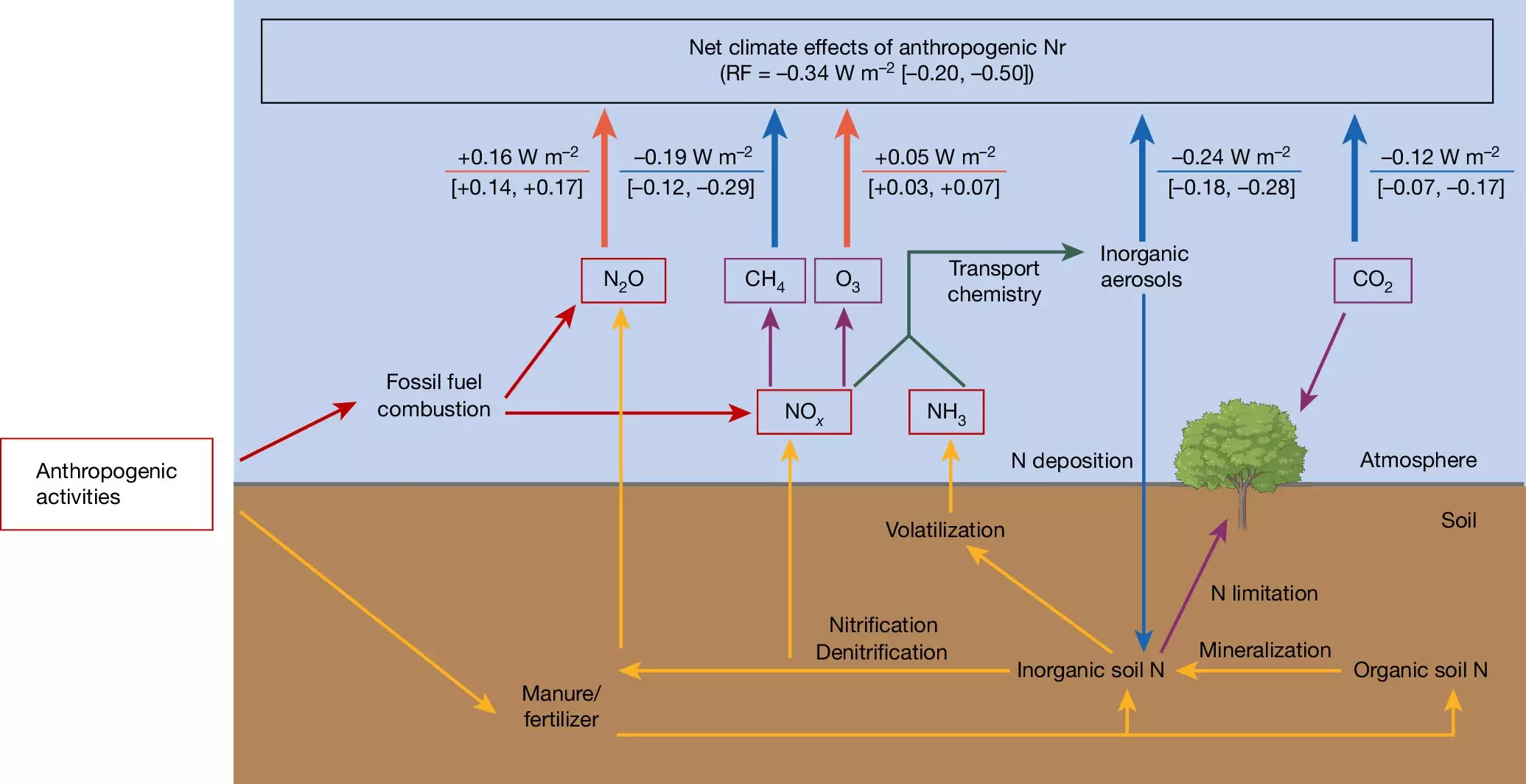Nitrogen is an essential element for life on Earth, but its journey through our atmosphere, soil, and water can incite both wonder and concern. The chemical variety of nitrogen—from inert atmospheric nitrogen to reactive forms like nitrous oxide and nitrogen oxides—plays a multifaceted role in climate dynamics. Scientific studies, including the recently published analysis by a team from the Max Planck Institute for Biogeochemistry, reveal that while these nitrogen compounds are notorious for their environmental degradation, they also contribute a surprisingly paradoxical effect: a net cooling of the planet. This revelation forces us to reconsider our perceptions of nitrogen’s role in climate science and environmental policy.
Dirty Secrets Behind Fertilizers and Fossil Fuels
Nitrogen fertilizers are a double-edged sword; though they significantly enhance food production, they are major culprits of environmental degradation. Leaching into waterways causes eutrophication, leading to harmful algal blooms that deplete oxygen and kill aquatic life. Moreover, nitrogen oxides released from fossil fuel combustion pollute the air, impacting human health and contributing to the decline of biodiversity. The troubling irony is that while these emissions emerge from human activities with glaring negative impacts, they also lead to localized cooling effects. This duality challenges us to identify effective strategies for management without oversimplifying a complex issue.
The Cooling Contradiction of Reactive Nitrogen
The Max Planck study indicates that reactive nitrogen has a net cooling effect of -0.34 watts per square meter, which positions it as a climate force of notable concern. Nitrous oxide, the most potent greenhouse gas emitted through fertilizers and fossil fuel combustion, paradoxically has the capacity to amplify global warming. Yet, the short-lived nitrogen oxides and ammonia serve to offset this by cooling the climate through mechanisms like the formation of fine particulate matter that reflects sunlight. This leads to an important realization: nitrogen’s role in climate warming and cooling is not opposed but intermingled in a complex web of interactions. It invites deeper investigation into how this interplay manifests across different ecosystems.
Nitrogen’s Role in Plant Growth: A Silver Lining?
Nitrogen’s ability to stimulate plant growth offers both a respite and a dilemma in the climate discussion. Enhanced plant biomass leads to increased carbon sequestration, effectively pulling CO2 from the atmosphere and potentially alleviating some impacts of global warming. However, this should not be misconstrued as a justification for unrestrained nitrogen emissions. The risks associated with oversaturation stem from their propensity to harm soil health, disrupt natural balances, and impair water supplies.
The interplay between nitrogen input and carbon cycling is critical. The complex biogeochemical pathways highlight how increased nitrogen can, paradoxically, support a form of cooling when managed wisely. Yet, it inherently relies on a delicate balance that could easily tip into chaos without proper regulation.
The Global Nitrogen Cycle: A Call for Responsible Management
As researchers mapped out impacts and pathways for nitrogen compounds, they emphasized that current approaches to nitrogen management are fragmented and outdated. The study challenges these traditional views by revealing that effective management extends beyond mere reductions of emissions to how we understand and interact with our ecosystems. It brings to light the notion that nitrogen should be regarded as both a resource and a liability.
If embraced thoughtfully, innovations in agricultural practices—such as enhanced efficiency in fertilizer application—could mitigate harmful emissions like nitrous oxide. Following sustainable practices not only aligns with better health outcomes for humans and ecosystems but must also form the backbone of any legitimate climate strategy.
Integration of Policy and Technology
Communication between scientific understanding and policy-making is pivotal in managing nitrogen inputs. Governments must prioritize interlinked strategies that encompass both the reduction of reactive nitrogen and greenhouse gases like CO2 and methane. Technologies such as precision farming, bioengineering of crops for better nitrogen use, and renewable energy sources must be embraced to foster a holistic approach to nitrogen management.
Moreover, public awareness campaigns about the multifaceted nature of nitrogen can empower communities to advocate for better agricultural practices and to question the statutes governing fertilizer usage and fossil fuels. The complex nature of nitrogen must be championed in discourse surrounding climate change, as it not only influences policy but also public perception.
Investigations like those from the Max Planck Institute highlight a pivotal truth: nitrogen is an intricate part of our environmental puzzle. Embracing nitrogen’s complex nature allows us to move beyond simplistic narratives, enabling a more nuanced understanding that can guide effective climate action. While reactive nitrogen does have cooling effects, we cannot ignore its profound risks to human health and ecosystem integrity. By promoting responsible management and technological advancement, we open doors to a more balanced relationship with this crucial element.


Leave a Reply